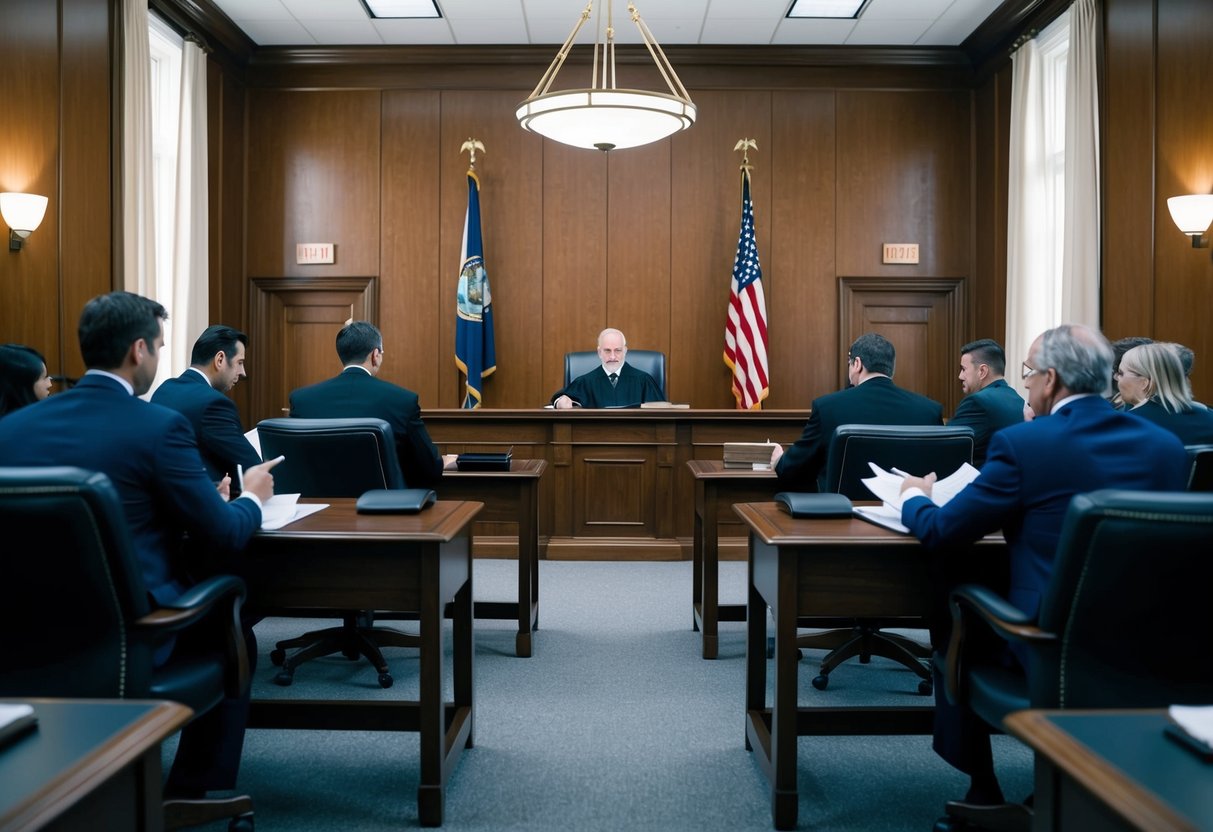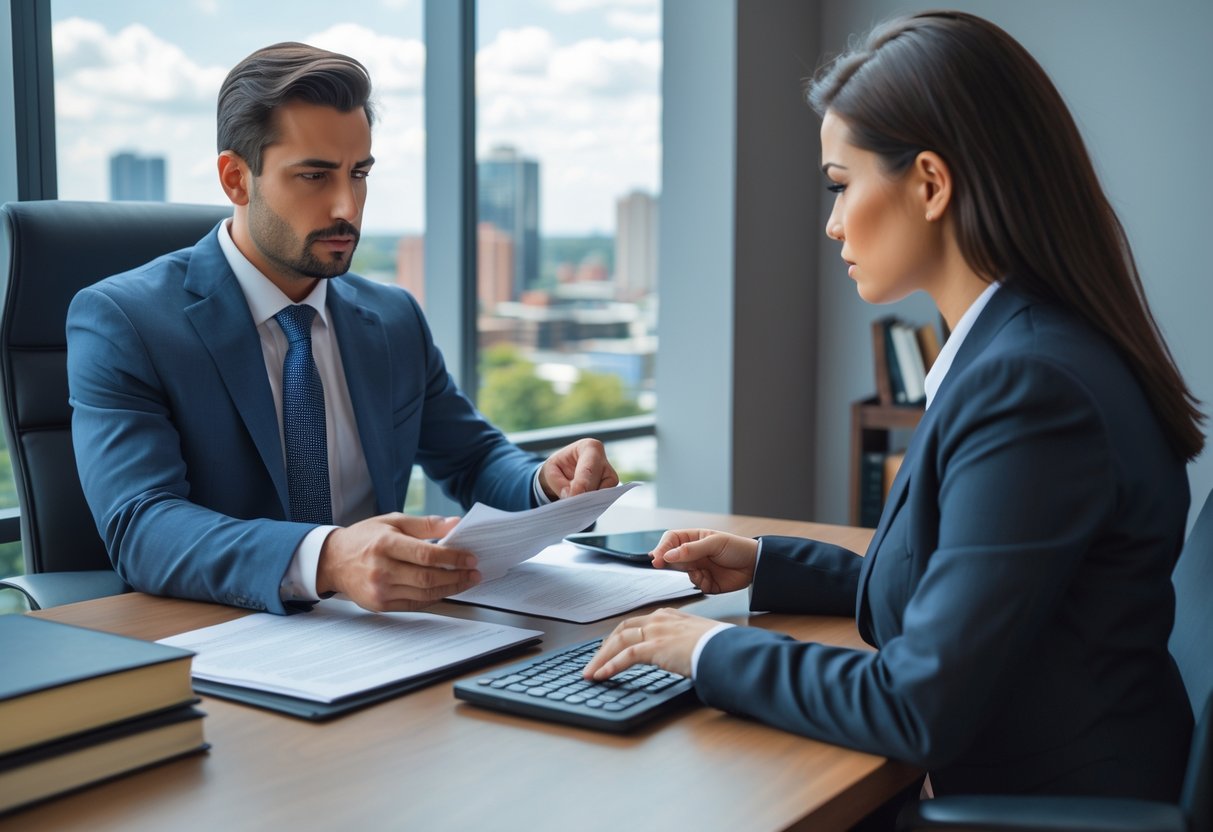Understanding Pre-Trial Motions

Pre-trial motions are crucial steps in the legal process that shape the path to trial. These motions can address various legal issues, set the tone for the case, and often determine its outcome before reaching a courtroom.
Types and Functions of Pre-Trial Motions
We often encounter several key types of pre-trial motions. Motions to Dismiss can end a case early if the claim lacks legal basis. Motions to Suppress seek to exclude evidence obtained unlawfully. Motions for Summary Judgment aim to resolve the case without trial when there is no dispute on the material facts. Each motion serves a specific function in addressing the legal status of the case, and understanding these can help in shaping successful legal strategies.
Some motions focus on procedural issues, while others target substantive legal grounds. The functions of these motions include clarifying points of law, resolving disputes before trial, and reducing trial length by narrowing the issues. By using these motions effectively, we can potentially save time and resources, ensuring a streamlined legal process.
Key Legal Arguments and Standards
Key legal arguments often hinge on the standards set by the court. When we file a motion to dismiss, we argue that the case lacks legal sufficiency. For motions to suppress, we need to prove evidence was obtained in violation of rights. The standards also influence motions for summary judgment, requiring undisputed facts to support a legal ruling.
In civil cases, the burden of proof lies with the plaintiff, impacting the strategies used in these motions. In criminal cases, motions must respect defendants’ rights, reflecting the court’s strict standards on evidence. Understanding these legal arguments and standards is crucial. They guide how we prepare and present our pre-trial motions to persuade the court.
Motion Practice and Procedural Rules
Detailed procedural rules guide the process of filing pre-trial motions. We start by submitting written motions that state the nature and basis of our requests. The other party has the opportunity to respond, often leading to a hearing where arguments are heard. This structured practice allows the court to address and resolve issues systematically before trial.
Deadlines are critical in pre-trial motions, as missing a filing date can impact case strategy. Additionally, specific formats must be adhered to, ensuring clarity and compliance. This process emphasizes thorough preparation and careful attention to detail in each step, allowing us to effectively engage with the legal system.
The Discovery Process

The discovery process is a crucial part of any legal proceeding. It involves collecting, sharing, and reviewing relevant information to build a strong case.
Gathering and Reviewing Evidence
We start by gathering all relevant evidence. This includes documents, emails, contracts, photos, and more. Our goal is to find information that supports or weakens claims.
Witness statements and expert witness reports, such as medical records, play key roles. We carefully review each piece of evidence. This helps us understand the strengths and weaknesses of our case.
Sharing evidence with the opposing side is vital. We ensure transparency and compliance with legal requirements. When needed, we file motions to compel evidence if the other side does not share it willingly.
Depositions and Interrogatories
Depositions and interrogatories are tools we use to gather witness information. In depositions, we ask witnesses questions in a formal setting. Testimonies are recorded for future reference.
Interrogatories involve written questions sent to the opposing party. They cover specific aspects of the case that might not emerge in other ways.
Both methods help us uncover detailed insights and clarify complex issues. They also prepare us for any challenges that might arise during the trial. Witness recollections and testimonies can be critical in shaping the outcome.
Admissibility and Evidentiary Challenges
Determining the admissibility of evidence is essential. We evaluate each piece to decide if it can be used in court. Some evidence may face challenges due to relevancy or legality concerns.
We prepare for possible evidentiary issues and develop strategies to argue for or against the inclusion of certain evidence. This stage can involve filing motions to exclude evidence that doesn’t meet legal standards.
Our legal representation makes sure all admissibility concerns are addressed. We aim to present the strongest possible case, ensuring all evidence is reliable and relevant.
Pre-Trial Hearings Overview

Pre-trial hearings play a crucial role in the justice system. They help clarify legal disputes and streamline the trial process by addressing key issues early on. These hearings can resolve evidentiary concerns and evaluate pre-trial motions for a smoother trial.
Purpose and Conduct of Pre-Trial Hearings
Pre-trial hearings provide a platform for parties to discuss how the trial will proceed. We often see legal professionals, including legal counsel, presenting their arguments and clarifying disputes. It’s where we decide on the sequence of events, focus on the arraignment, and discuss any pre-trial motions.
Legal counsel plays a vital role. They work on plea bargaining, manage evidentiary issues, and may argue to suppress evidence if necessary. This step is essential for trial preparation, ensuring that all parties understand the scope of the trial. Since these hearings focus on coordination, they can help reduce the duration of the trial, benefiting the entire legal system.
Determining Legal and Factual Issues
Determining legal and factual issues helps narrow down the key points in a case. This process evaluates which disputes require resolution during the trial. Our focus here is on legal arguments that need clarity before moving forward. By doing so, we improve efficiency and fairness in the criminal justice system.
Addressing potential issues like the statute of limitations or specific evidentiary matters is crucial. Pre-trial hearings offer an opportunity to discuss unresolved points, potentially leading to arbitration or other forms of dispute resolution. By ironing out these details beforehand, we make the trial process more predictable and organized, contributing to a just outcome.
Trial Preparation Strategies
Trial preparation involves crafting a legal strategy and assessing liability to develop convincing arguments. We focus on presenting evidence and witness testimonies to achieve justice. Understanding our constitutional rights aids in navigating the litigation process effectively.
Crafting Effective Legal Strategy
To create an effective legal strategy, we need to evaluate the strengths and weaknesses of our case thoroughly. Analyzing legal precedents and current laws ensures we follow the latest legal standards. We must also consider alternative dispute resolution options like settlement negotiations to minimize trial risks.
It’s essential for us to gather all necessary evidence, including affidavits and physical evidence, ensuring we have a solid foundation. By preparing key witness testimonies and expert witnesses, we can support our legal claims convincingly during trial. Our approach should account for potential counterclaims and aim to protect the rights of our clients under the Fourth and Sixth Amendments.
Assessing Liability and Developing Arguments
Accurate assessment of liability is crucial in formulating strong arguments for trial. We begin by examining all evidence, such as witness statements and accident reconstructions. This evaluation helps identify pivotal moments that will influence case outcomes.
Understanding the charges and legal process is key to developing a defense strategy. During jury selection, we engage in voir dire to ensure a fair trial. We aim to prepare motions, like a motion in limine, to limit prejudicial evidence and safeguard our client’s rights. By anticipating legal issues and potential plea offerings, we position ourselves to achieve the best possible outcome for our clients.
Navigating Settlements and Plea Bargains
In legal proceedings, resolving disputes without going to trial can save time and resources. Settlements in civil cases and plea bargains in criminal cases offer effective ways to reach a resolution.
Exploring Settlement Options in Civil Cases
In civil cases, parties often seek to settle disputes without a trial. Settlement negotiations can be quicker and less costly than court battles. During negotiations, both sides discuss their expectations and seek a fair resolution. Mediation can help. A neutral third party assists in finding common ground. This process can lead to a binding agreement that satisfies both sides.
Effective negotiation requires understanding the full scope of the case, including evidence and legal strategies. We must determine a reasonable settlement by considering all aspects. Knowing when to push for more or settle is crucial. Legal strategies often involve weighing the strengths of one’s case against potential court outcomes.
Understanding Plea Bargaining in Criminal Cases
Plea bargaining is common in criminal cases, offering a chance to resolve charges without a trial. Typically, this involves the defendant agreeing to plead guilty to a lesser charge. The prosecution may offer reduced penalties. Plea bargaining can ensure a quicker resolution than a full trial.
This process requires us to carefully consider exculpatory evidence and indictment details. We need to weigh the benefits of a plea against the potential trial results. Plea agreements often require us to understand the charges and possible defenses. A strategic approach can help navigate these decisions for the best possible outcome.




